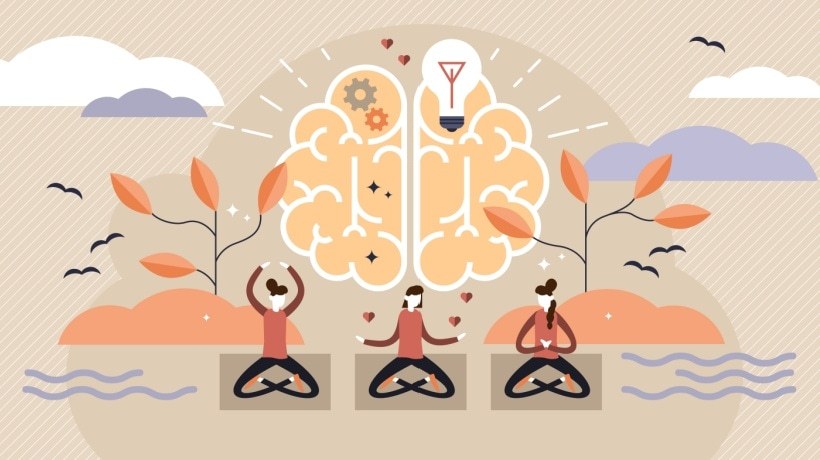Mindfulness: eLearning's Missing Piece?
Online learning modules have helped students in numerous ways. You can tailor classroom lessons to each young person's pace, but the virtual environment still has challenges. Kids may feel distracted or struggle with a lack of structure. Discover how mindfulness improves online learning to understand why it's essential for eLearning designers, teachers, and education professionals.
Defining Mindfulness For Educational Settings
When people think about mindfulness, they might picture the wellness industry. The practice is foundational to many mental health services and beneficial in schools. Mindfulness is a process where someone pays attention on purpose [1], without judgment or thinking about what comes next.
You can be more mindful anywhere, especially in classrooms. The key is teaching students how to focus on what's happening at that moment. Research from the National Center for Education Statistics (NCES) found that 26% of public school teachers see a lack of attention from students that severely impacts their learning. Integrating focus techniques with daily virtual lessons could reduce that challenge.
How Does Mindfulness Improve Online Learning?
Teaching mindfulness or adding it to module formatting will help students in numerous ways. Designers and teachers can anticipate a few common benefits once kids start being more present during their lessons.
It Hones Emotional Regulation
Complex emotions don't wait until adulthood. Kids start understanding deeper emotions between 6 and 12 years old [2], so they may grapple with shame or guilt and not know how to handle it. If they had a negative interaction with family or friends before school starts, your students might be unable to process their feelings and focus. Mindfulness techniques show them how to check in with themselves and separate those overwhelming emotions.
Mindfulness Develops Concentration Skills
Your attention is like a muscle. Young people haven't had much time to strengthen that muscle, but mindfulness gives them mini attention exercises. People who practice mindfulness regularly improve their attention capacity [3] because focusing becomes a familiar skill.
Kids Learn Greater Self-Awareness
Kids constantly learn about their strengths when presented with new educational challenges. Mindfulness is one of them. When young people understand their potential better by developing skills like self-awareness, they boost their school performance [4] because they can self-regulate. They may also gain more confidence in their abilities, motivating them during challenging academic times.
Ways To Implement Mindfulness In Classrooms
Teachers and eLearning designers can add more mindfulness opportunities to virtual modules, regardless of the curriculum. Students in in-person, online, and homeschool classrooms will benefit from the mental health practice by participating in some common structures.
1. Use Deep Breathing Timers Daily
Timers are a free tool that you can implement in any setting. Live video classes or virtual modules can set aside a few minutes for deep breathing exercises. You might even use timers with video clips. Seeing a countdown in front of a calming nature setting could enhance your students' cognitive functions while reducing their anxiety [5].
Short timers also ensure that the lesson doesn't become lost in mindfulness moments. You'll help your students practice deep breathing within their current attention span length, gain the attention benefits of calming their mind. and retain the essential structure of your lesson.
2. Add Journaling Opportunities
Journaling is an excellent mindfulness tool for students who need more grounding. Create online forum prompts, polls, or reflection forms so anyone learning online can participate. They could write about their current feelings or thoughts to raise their emotional awareness. The practice is a foundational way mindfulness improves online learning, and is easy for students to do once they know how to write.
3. Incorporate Mindful Stretch Videos
Emotions can manifest in the body and distract anyone. Students might not be able to focus on their lesson because anxiety is causing muscle aches. Mindfulness stretching eases the tension that might pull their minds away from learning. Short stretching videos will guide your students as they check in with their feelings.
Homeschooled students have a unique opportunity to use this format. They may have more space for wider stretches than young people sitting at traditional desks. If stretching becomes part of an online classroom learning path, you'll normalize the practice for students of all ages.
4. Model Mindfulness On Camera
Your students learn from more than lesson plans. They notice how you interact with others, speak, and hold yourself as an authority figure. Teachers can continue adding mindfulness to their online learning sessions by demonstrating it through their words and actions.
Acknowledge students' feelings and encourage their introspective feedback. Whether they're checking in as a homeschooler or participating from a public school, your students will see mindfulness in action daily.
5. Check In With Everyone
Check-ins are additional opportunities for self-reflection. After your lessons or modules end, give students a place to note where they lost focus. They could submit an online form or leave a comment in a designated module space. The next time they encounter the same situation and their attention drops, they might notice it in real time and resolve the issue.
Teachers also benefit from checking in with themselves. Reflecting on how you felt during a lesson in any classroom setting turns into more engaged and effective teaching [6], which helps every student perform better academically.
Potential Challenges To Overcome
Trying something new in virtual classrooms may present some challenges. eLearning creators and teachers can overcome them with common strategies. Working around daily time constraints will make mindfulness activities easier to start. You could tailor your deep breathing timers to your class schedule or the time allotted for daily quizzes.
You'll also need to learn how to measure your impact. Feedback mechanisms like online polls can guide those metrics. If your students are too young to participate, you can aim for a class-wide grade improvement. See if your mindfulness additions help everyone earn an extra two points on report cards or the specific numeral improvement that's realistic for their academic standing.
Anticipate A Future Of Mindful eLearning
Mindfulness could become the next transformative tool in online classrooms. Whether you teach students or create the modules, showing young learners how to reflect and process their feelings may improve their long-term academic success in a setting known for having additional distractions.
References:
[2] How to Help Kids Regulate Their Emotions
[5] Associations between Nature Exposure and Health: A Review of the Evidence








